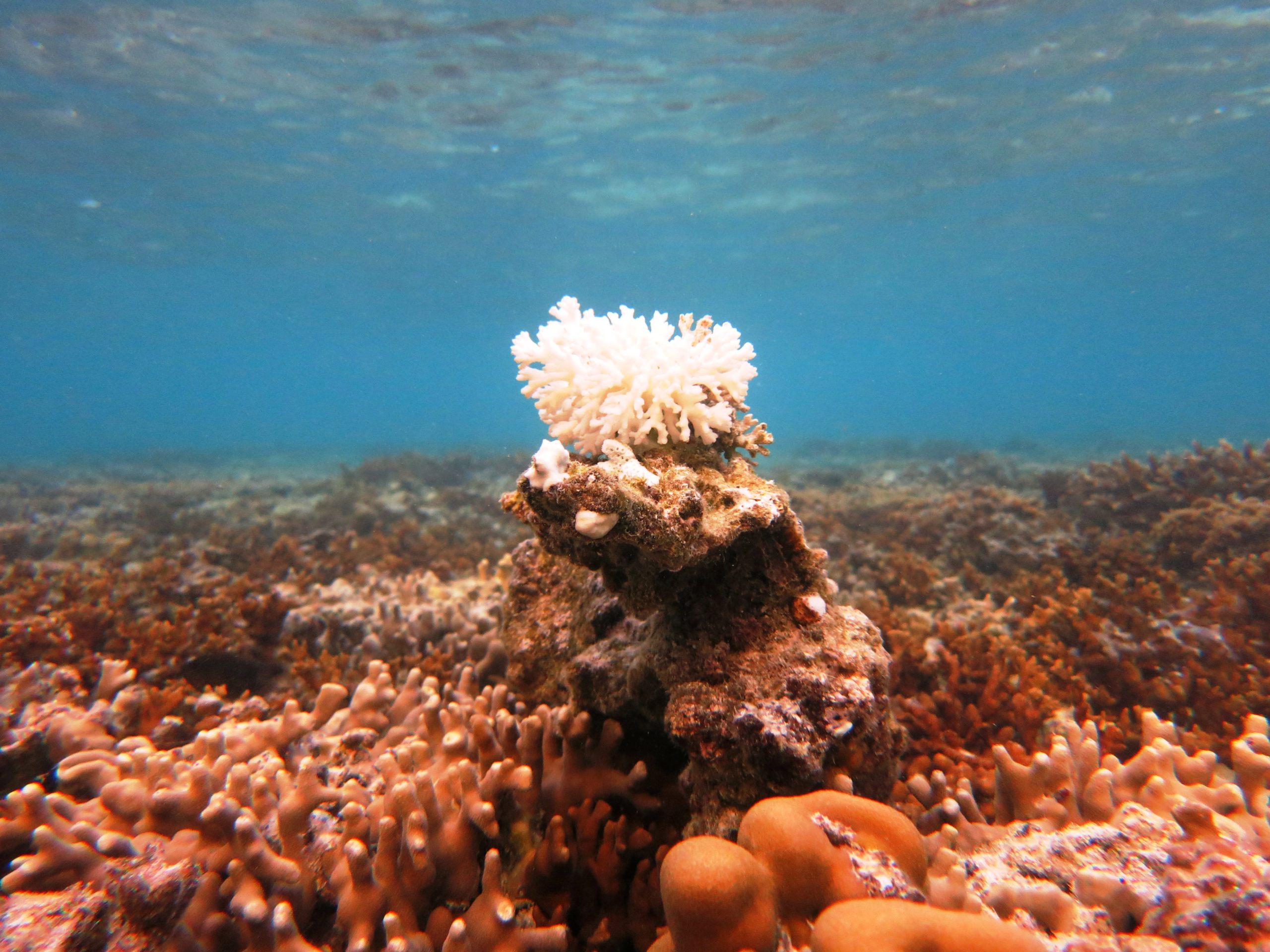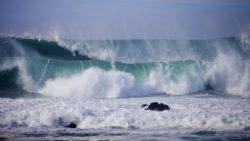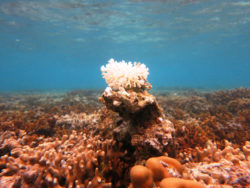
Ocean Acidification 101
Ocean acidification is a huge problem for our ocean and way of life. In fact, it is sometimes referred to as climate change’s evil twin or famous cousin. Thanks to a growing body of research on ocean acidification, we know now more than ever about what causes it, what the effects are, and how to prevent its worst effects. Luckily, you don’t need a Ph.D. in ocean chemistry to understand the problem or how you can help!
What is it?
Ocean acidification is a chemical process that changes the properties of seawater. Specifically, carbon dioxide from the atmosphere interacts with water molecules to create carbonic acid, which then breaks down into hydrogen ions, bicarbonate ions, and carbonate ions. These chemical reactions reduce the pH level (a way to measure hydrogen ion concentration in water) of sea water, making it more acidic. The ocean is the world’s largest carbon sink, which is a natural part of the global carbon cycle. However, this process quickly falls out of balance when human activities add significant amounts of carbon dioxide to the atmosphere. The end result is an increasingly acidic global ocean.
Why does it matter?
Ocean acidification poses challenges to plants and animals that are essential to marine ecosystems and human society. As the ocean acidifies, calcium carbonate molecules – the minerals that build the skeletons and shells of organisms like corals, oysters, sea urchins, and crabs – dissolve more rapidly. This makes survival harder for these organisms, leaves them vulnerable to predators or limits their growth, and threatens the health of their populations. Ocean acidification can also negatively affect organisms that don’t have shells, like zooplankton that provide the foundation for many marine food webs or fish species that use chemical sensations to avoid predators. On top of other survival challenges animals in the ocean face, the effects of ocean acidification can threaten the balance or existence of ecosystems, disrupt food webs, and set into motion further disruption of the world’s natural carbon cycle. For example, both ocean acidification and coral bleaching pose extreme threats to coral reef populations. Bleaching is a process that involves corals expelling zooxanthellae algae from their tissues when stressed by changes in environmental conditions such as temperature, pollution, nutrient availability and more. This process leaves behind a vulnerable, white skeleton and when combined with challenges to build hard skeletons, it increases their chances of mortality and threatens reef resiliency.
What can we do about it?
Ocean acidification is a huge problem and it is directly related to the release of carbon dioxide into the atmosphere. Reducing our household carbon footprints and supporting transitions to cleaner energy are a great way to help. Scientists have also found that marine plants like kelp, seagrass, and mangroves can offset ocean acidification by capturing and storing carbon molecules in their roots, leaves, and stems, which wind up buried in underwater sediment – and out of the atmosphere — for thousands of years! By supporting the protection and restoration of ecosystems that include marine plants, we can also make progress toward an ocean that is more in balance.


